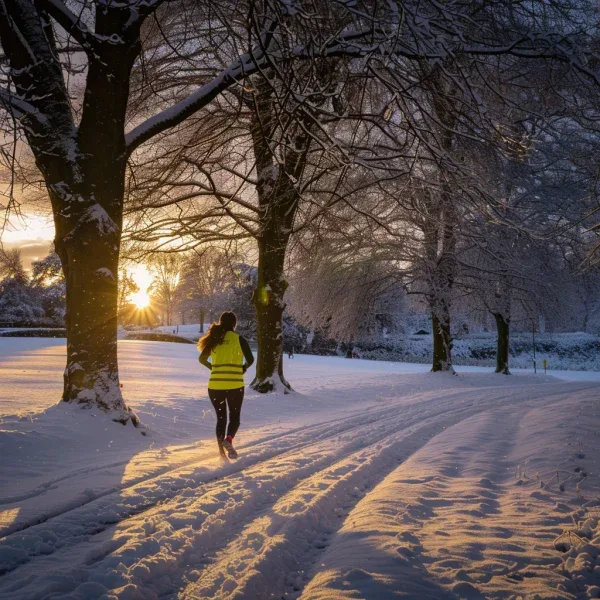by Nadia Sinclair

As winter dive in, your motivation for outdoor workouts might grow thin. Chilly mornings, dark nights, and rainy afternoons can make the thought of stepping outside seem rather unappealing. Add to this the recent concern over personal safety during outdoor exercise, and it becomes even more daunting. Despite these challenges, we are bent on not letting winter freeze our fitness goals, especially the joy of running under the crisp winter sky. The key lies in adapting intelligently and proactively to the season’s demands.
The issue on women’s safety during outdoor activities has been highlighted recently due to increasing reports of assault. We believe everyone deserves to feel fearless during their outdoor exercise sessions, hence the need to be prepared and caution cannot be overstressed. Surveys show that a significant number of women feel uncomfortable walking alone after dark on quiet streets near their homes. Yet, safety does not only mean protection from possible danger but also maintaining physical well-being – avoiding hypothermia, falls, and other accidents. With the right approach and gear, you can balance safety with an enjoyable winter workout.
Navigating Safe Winter Workouts: Running After Dark
1. Become a Moving Beacon
Guarantee your visibility on gloomy days with bright, fluorescent workout clothes. After dusk, strategic reflective gear becomes essential for reflecting vehicle lights. A reliable head torch can be a game-changer for runners, while cyclists should ensure good-quality front and rear lights.
2. Acknowledge the Power of Sound
Leave your night-time music sessions at home – keeping your ears open is essential to recognize approaching vehicles or individuals. Carry a whistle during your outdoor workout, which can be used in case of emergencies. Download a safety application that provides live GPS for emergency contacts or a panic button. Cyclists should not forget to have a loud bell on their bikes to alert others of their presence.
3. Practice Safety in Numbers
Running with a partner, joining a club, or participating in outdoor group workouts can significantly enhance your safety. If solo workouts are unavoidable, choose well-lit familiar routes in populated areas. Vary your routes and inform someone about your running plan before leaving.
4. Control your Pace
For runners and cyclists, dark and misty winter days aren’t ideal for high-speed workouts, as potential hazards might not be visible. Besides, intense exercise can drain your energy, making you less alert. Slowing your pace doesn’t mean avoiding challenging workouts, but switching them to safe indoor environments or well-lit outdoor spaces.
Remember, understanding and increasing the awareness about your safety shouldn’t stop you from enjoying the winter workouts. Rather, it’s about fostering a sense of control over every aspect of your wellbeing – even when exercising among snowflakes!
winter workouts, outdoor exercises, women’s safety, running after dark, winter running tips, winter cycling tips, safety gear, reflective activewear, safety applications, group workouts, high visibility clothes, safety in numbers, tread carefully, winter exercise safety
Leave a Reply